Cleaner, Greener Airports: Making Aviation More Sustainable – Tallinn Airport
- Like
- Digg
- Del
- Tumblr
- VKontakte
- Buffer
- Love This
- Odnoklassniki
- Meneame
- Blogger
- Amazon
- Yahoo Mail
- Gmail
- AOL
- Newsvine
- HackerNews
- Evernote
- MySpace
- Mail.ru
- Viadeo
- Line
- Comments
- Yummly
- SMS
- Viber
- Telegram
- Subscribe
- Skype
- Facebook Messenger
- Kakao
- LiveJournal
- Yammer
- Edgar
- Fintel
- Mix
- Instapaper
- Copy Link
Posted: 19 February 2021 | Riivo Tuvike | No comments yet
In the second instalment of International Airport Review’s exclusive sustainability series, CEO of Tallinn Airport, Riivo Tuvike, provides an insight into the airport’s efforts to become more environmentally responsible and how it is working to protect local nature and wildlife.
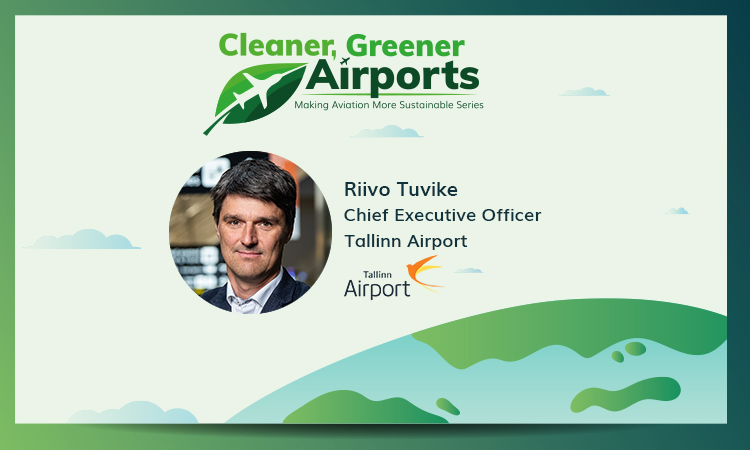

A sustainable and responsible attitude towards our environment is a value appreciated by all of the employees of Tallinn Airport (TLL) and has been our focus for years. Aviation, like any other means of transport, inevitably impacts the environmental situation and safety. Therefore, we have to make efforts to reduce the negative impact of our company and the load on the environment in order to be as sustainable as we can in our operations.
These physical manifestations made people more aware of their impact on the environment and helped us, as a world community, to take bigger steps in the direction of environmental protection”
2020 taught us all a lot, both in personal life and at the company level. It definitely made us think more than ever of sustainability, expenses and incomes, as well as made us realise how fragile the world can be and how quickly things can change. In the midst of all of the negativity, from time to time, we heard news from the wide world telling us how the air quality had considerably improved thanks to people staying at home, and visibility in certain parts of the world turned from foggy twilight to bright day. These physical manifestations made people more aware of their impact on the environment and helped us, as a world community, to take bigger steps in the direction of environmental protection.
Environmental process management is important
In order to achieve the desired results, it is important for us to know where we are today and how we plan to achieve our goal with awareness and consideration.
The environmental management system that we are using today meets the requirements of international standard ISO 14001:2015. We use that environmental management system to manage all of our activities that may impact the outdoor air, water, landscape, natural resources, flora or fauna and the relationships between them. The principles of environmental protection, energy efficiency and sustainable development form an inseparable part of the planning and implementation of our development activities. Investments into the best possible technology and environmental protection, as well as environment and noise monitoring, are measures that we use to ensure the sustainable development of airport operations.
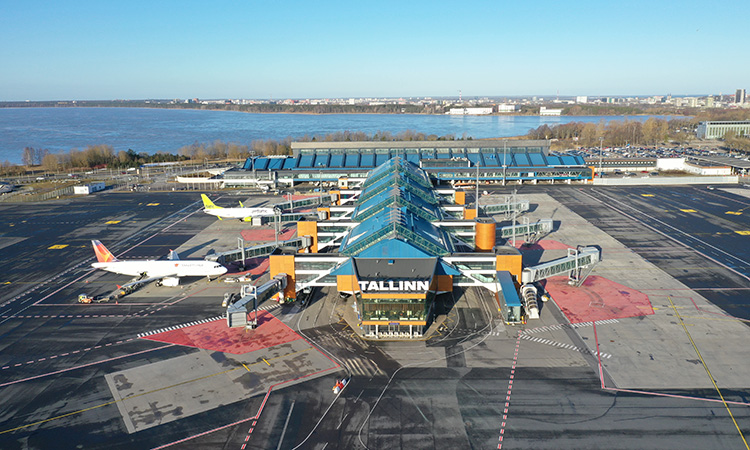

Credit: Tallinn Airport
A systematic approach to environmental management requires consistent improvement and a focus on efforts to prevent undesirable consequences. Process-based management requires the application of a so-called ‘plan–carry out–check–act’ methodology, focusing on risk-based thinking.
In 2019, the environmental management system manual of AS Tallinna Lennujaam was issued, which applies to all of the airports that it oversees. The manual is used to instruct employees in order to ensure the effectiveness and constant improvement of environmental performance. We also use the manual externally in order to introduce the guiding principles and requirements of the environmental management system to our partners and stakeholders. In addition to our partners and other companies related to aviation and Tallinn Airport, we also have an important role in increasing the awareness of passengers and shaping their behavioural habits.
It is important to take the first steps
Taking the first steps is never easy, but the results are always worth it. For instance, we have used LED lights for the illumination of our runway since 2017 and have started expanding waste separation across the whole company.
In order to preserve the diversity of species around the airport, peace has been established at the territory around the airport during the bird nesting season”
Tallinn Airport is unique because of its location. On one hand, the airport is located only a five minute drive from the city centre, and, on the other hand, the airport territory is partially bordered with a thick forest. In order to preserve the diversity of species around the airport, peace has been established at the territory around the airport during the bird nesting season. We’re happy to report that eagle owls, which are among the protected species in Estonia, live right next to Tallinn Airport.
One of our goals is to become an airport free of disposable plastics and, in 2020, we even made some preparations. However, due to the global COVID-19 situation, the goal had to be set aside for a while, and we had to prioritise the health and safety of our passengers and employees. Yet, it is good to see an increasing number of alternative solutions for disposable plastics – for instance, more and more of our employees prefer to use reusable lunch boxes and the use of cardboard boxes that are far friendlier towards the environment has increased.
Preservation of the environment begins with knowledge
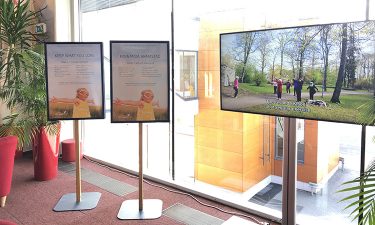

Credit: Tallinn Airport
You only need to take a few steps in the right direction to bring about change. We are focused on raising the environmental awareness of our employees and partners and have been for several years. Every year, in May, we hold an ‘Environment Month’; 2020’s event was called ‘Take care of what you love’. The goal of the Environment Month is to focus on, and contribute to, sustainable development and environmental protection. Throughout the month, we share tips and materials on how simple, and how much fun it can be, to help to protect the environment.
In order for our goals and targets to be more visible to all of our employees and our partners, we created an illustrated poster with environmental goals for the next few years. The poster includes our Sustainable Development Goals (SDGs) and the major environmental goals of the company. Thus, all of our employees can get a quick and easy idea of where, and how, the company is moving.
In 2020, Tallinn Airport joined a project called ‘The Sea Starts Here’, initiated by the Tallinn City Government and the European Green Capital project team, aimed at improving the health of Estonian rivers, lakes and the Baltic Sea, and, above all, raising the environmental awareness of the Estonian people. As a part of the campaign, rainwater manhole covers were marked with the message ‘The sea starts here’. In addition to the message, the asphalt was marked with a visual sign to prohibit the dumping of garbage into the rainwater hatch and a reference to local water inhabitants, like fish and seals.
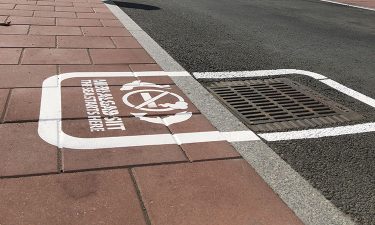

Credit: Tallinn Airport
Around 1,000 rainwater hatches in 15 Estonian towns were marked with the reminder during the campaign to inform people of the environmental danger of cigarette ends being washed away with stormwater into the Baltic Sea. We marked 10 stormwater manholes with the visual campaign sign at Tallinn Airport and shared information about the project and environmental protection with our employees, partners and passengers.
Our building and development work is based on the principles of environmental protection
Our development and expansion works are also based on the principles of environmental conservation, and the works include those with an aim to protect the environment”
Our development and expansion works are also based on the principles of environmental conservation, and the works include those with an aim to protect the environment. During the current expansion of our eastern area, we will, for instance, increase our capacity to collect de-icing chemicals, directing those to a wastewater tank, thus reducing the amount which ends up in stormwater sewerage and nature. We will also build additional oil traps that enable us to prevent the transfer of fuel and oil contamination into the environment. We will also build a water pumping station to the eastern end of the runway in order to keep the water level of the area under control, achieving constant work of onsite treatment plants and preventing flooding caused by external factors.
For an airport, noise pollution is inevitable. In order to reduce it, and to prevent the spread of the noise, we have built an engine testing area that will be completed with noise barriers by the end of 2021. Once the noise barriers are installed, noise mapping will take place in the area, in order to determine the effectiveness of the new measures.
Renewing Tallinn Airport’s fleet step by step
As is the case with any major change, the renewal of our ground support equipment requires analysis and research into the best offer. Our company is constantly and consciously moving towards resource-efficient equipment, thereby increasing service capacity and excellence of the company. Our goal is to make our fleet more environmentally friendly and reduce our carbon footprint by 2025.
Our goal is to make our fleet more environmentally friendly and reduce our carbon footprint by 2025″
The bus fleet of Tallinn Airport includes two gas-powered buses, and the regional airports have two electric luggage trucks. Feedback on the first steps has been positive, with several passengers noticing the markings on the bus stating it to be an environmentally friendly vehicle, as well as the fact that it is a gas-powered bus. In the long term, we will consider whether to continue with gas-powered buses or move on to electric buses.
In total, 38 per cent of the fleet of our subsidiary, Tallinn Airport GH, is already environmentally friendly, i.e. 38 of 101 pieces of equipment are powered by electricity. At the beginning of 2020 we commissioned our first electric ground power unit (GPU), which, in addition to being environmentally friendly, also has a direct positive effect on the financial results of the company – the battery-powered GPU saves us about 2,000 litres of fuel per month. A new fully electric ‘pushback’ truck for manoeuvring aircrafts should also arrive in February 2021.
First kWs of our own energy
In 2020, we started building solar parks in all of the airports, with a purpose of reducing the amount of carbon we generate and moving towards the use of renewable energy. In December 2020, seven 50kW power plants were commissioned all over Estonia: Two in Tallinn, two in Pärnu and one solar park in Tartu, Kärdla and Kuressaare, which produce nearly two per cent of the own annual consumption of our group. However, when we look at the regional airports, the park in Pärnu produces 34 per cent of the needs of Pärnu Airport, the park in Kärdla produces 21 per cent of the needs of Kärdla Airport, the park in Tartu produces eight per cent of the needs of Tartu Airport and the Kuressaare park produces 19 per cent of the needs of Kuressaare Airport.
In 2021, we plan to build two 500kW plants in Tallinn and, in 2022, the plan is to build at least two more 1MW plants. Once we have completed the projects that have already been launched, we will have the capacity to produce 20 to 30 per cent of the required energy on site and from renewable sources of solar energy. We will also continuously look for new, innovative ways to reduce our energy consumption.
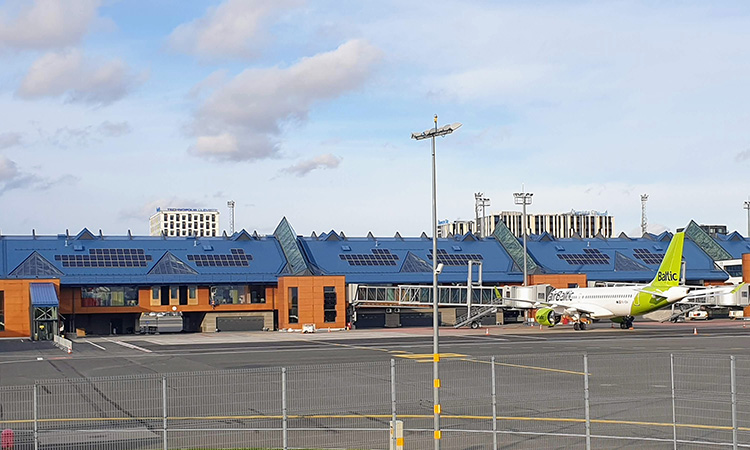

Credit: Tallinn Airport
Goals for the current year have been set
As I mentioned, we are already using 100 per cent LED lighting for our runway, and our aim is to start the installation of LED luminaires for the apron, as well. The overall aim is that, in the future, all airports that Tallinna Lennujaam AS oversees will only use LED luminaires. One of the projects we are focusing on in 2021 is evaluating our lighting solutions in the terminal and developing a new, more efficient and sustainable lighting system that will fulfil all lighting requirements and be better for the environment, as well.
We are also planning to continue the expansion of the waste management system and improve the possibilities of waste separation both for employees and passengers”
We are also planning to continue the expansion of the waste management system and improve the possibilities of waste separation both for employees and passengers. The current solution provided for our employees has been completely justified and well received. Our last cleaning procurement also included a requirement to assess the waste management system and increase recycling. Waste management is a part of the green office principles that we apply in our company. Following this principle, we use natural resources in a sustainable manner, reduce waste creation and make the working environment healthier. For instance, we urge our employees to drink tap water, and tables with adjustable height have been installed at workplaces.
But that is just a part of what Tallinn Airport is doing on a daily basis, all with the purpose of helping the environment to save our forests for future generations.
AS Tallinna Lennujaam
The goal of AS Tallinna Lennujaam is to ensure sustainable and responsible operations of the airports owned by the group and the provision of high-quality service, while saving the natural environment and reducing emissions. The goal of AS Tallinna Lennujaam is to be a carbon-neutral airport by 2030 and a climate neutral airport by 2050.
Riivo Tuvike is the CEO of Tallin Airport, where he joined the team during the summer of 2019. He is an experienced professional and leader with a demonstrated history of working in the banking and leasing industry. He holds a Master’s Degree in Strategic Management and is skilled in negotiation, business planning (operative and strategic level), banking, leasing, sales, people management and leadership.
Related topics
Airside operations, Cleaner, Greener Airports: Making Aviation More Sustainable Series, COVID-19, Emissions, Noise abatement, Runways and pavements, Sustainability, Sustainable development, Terminal operations


















